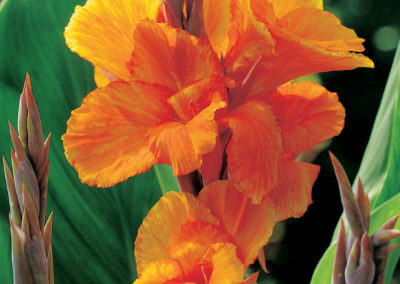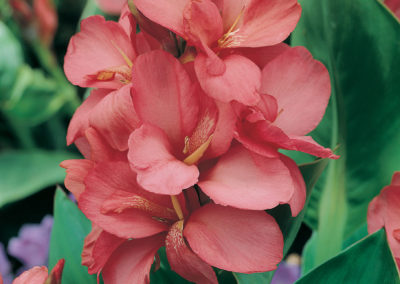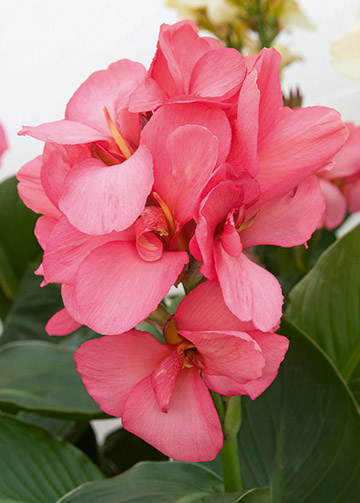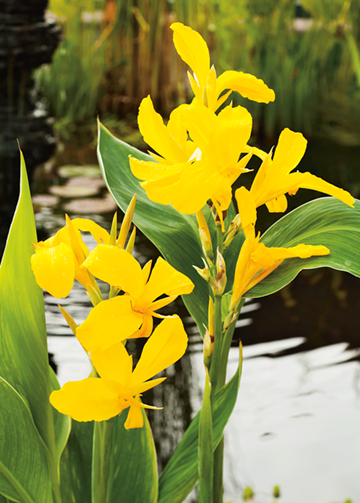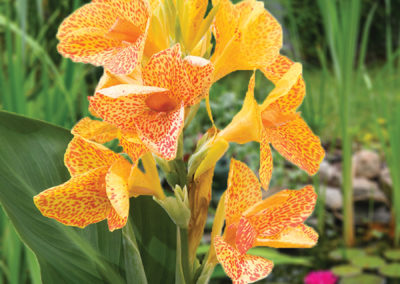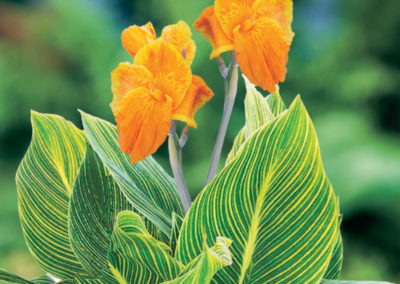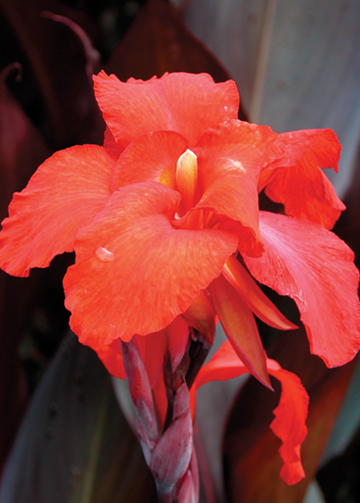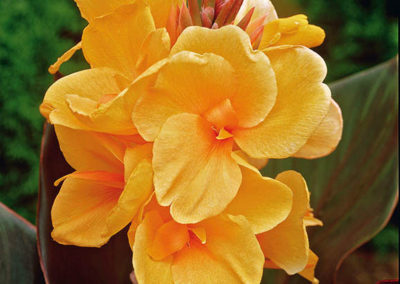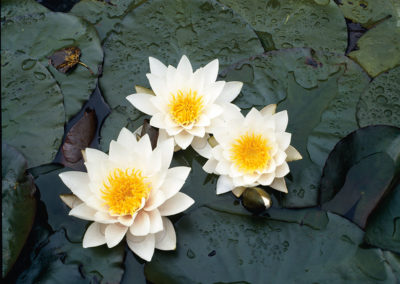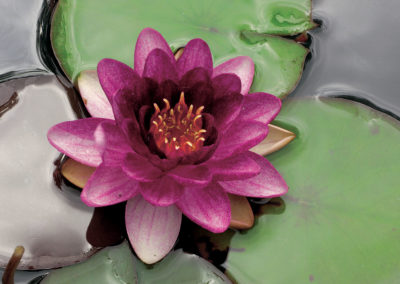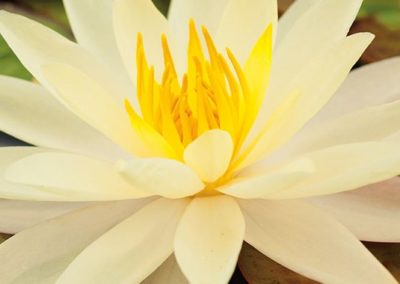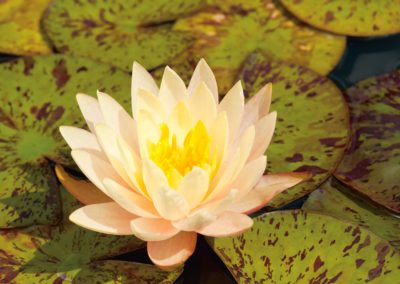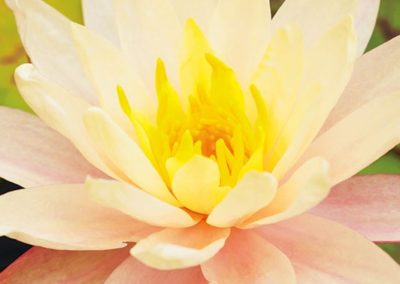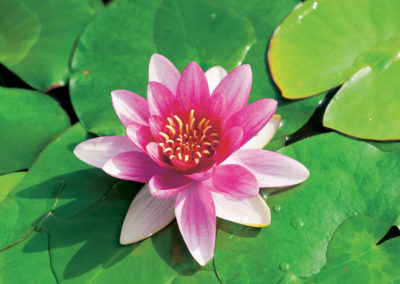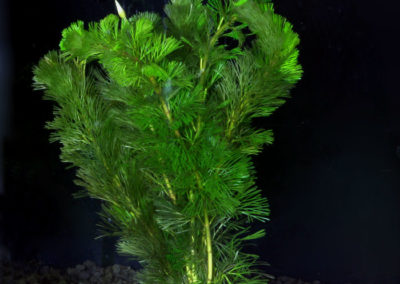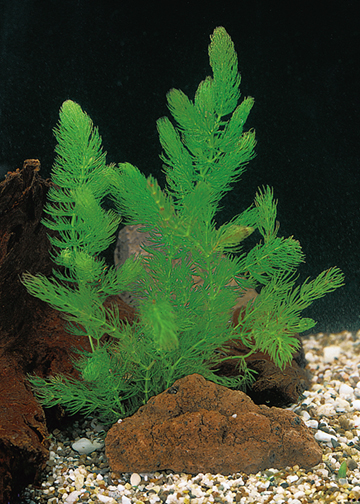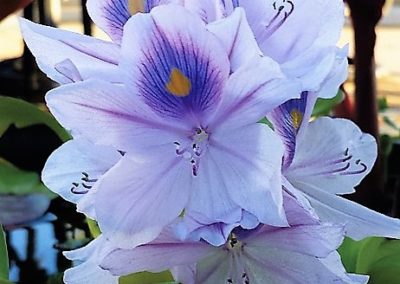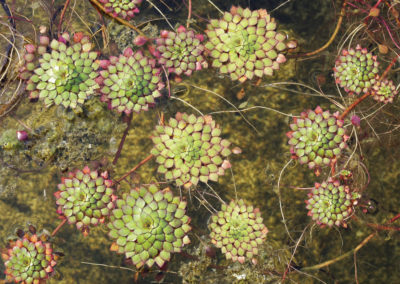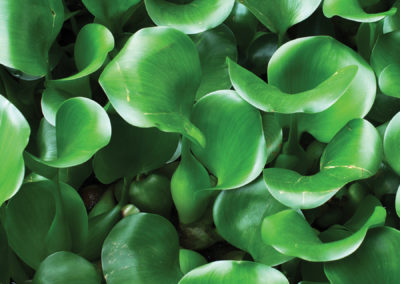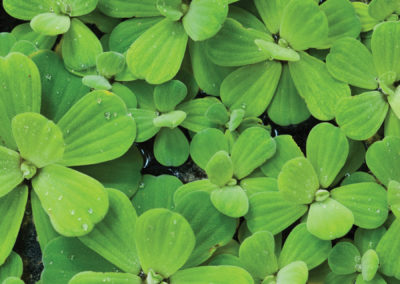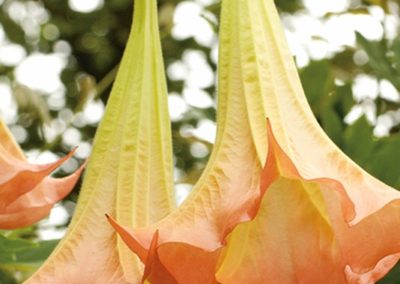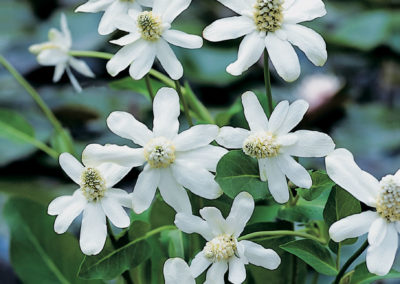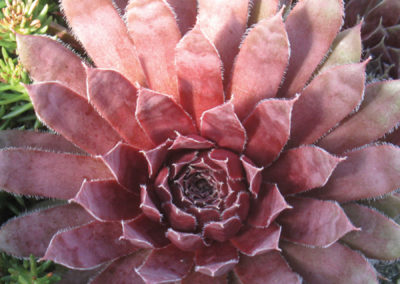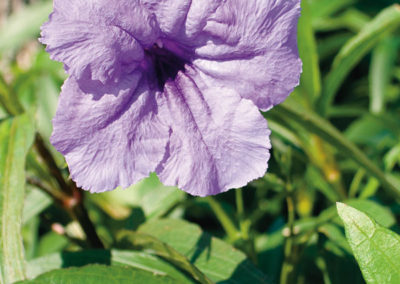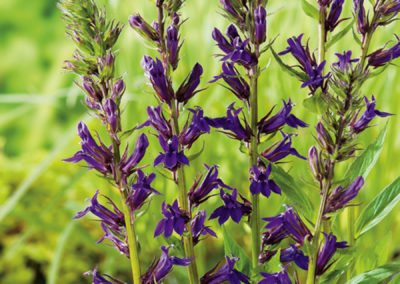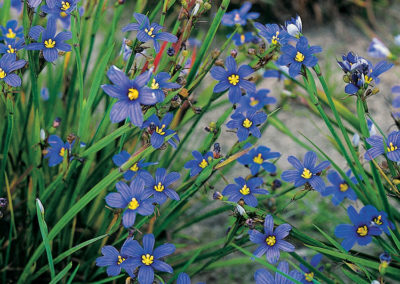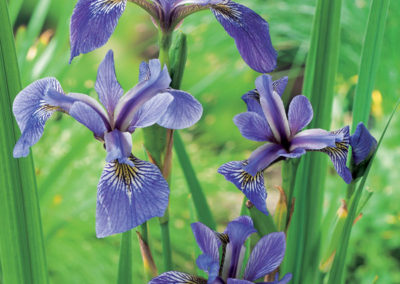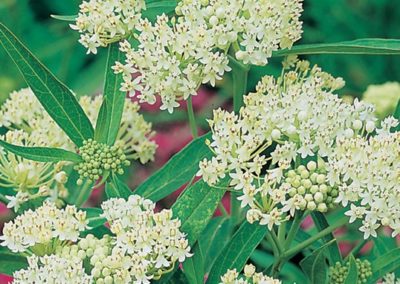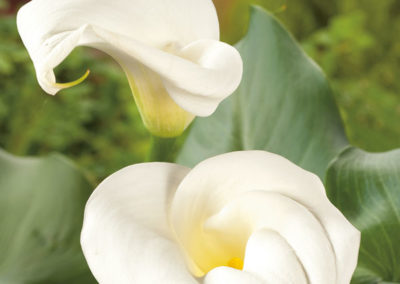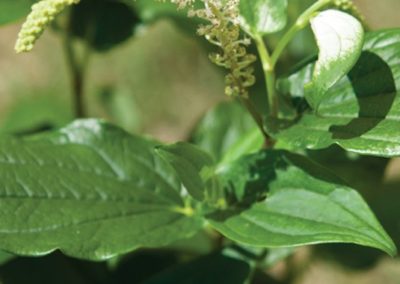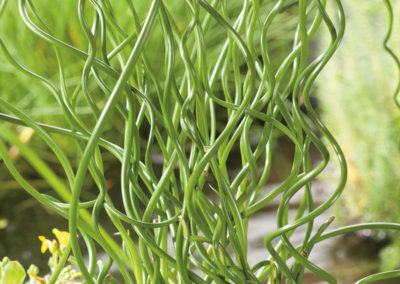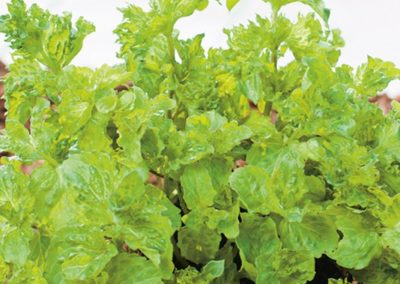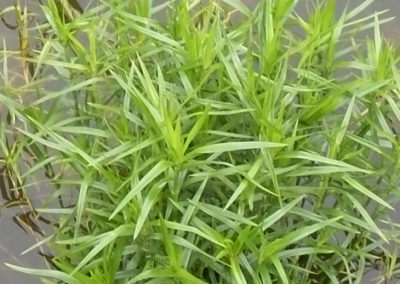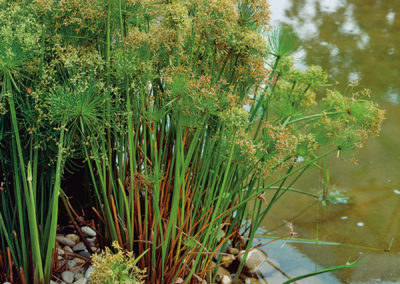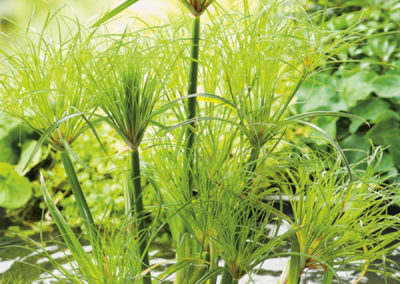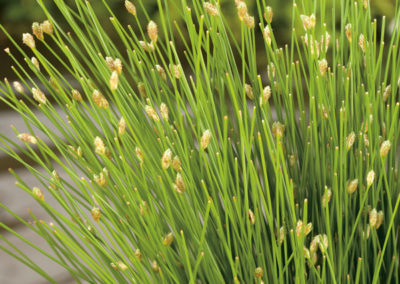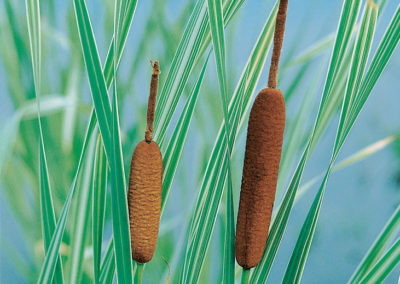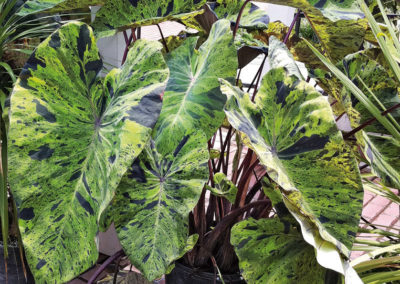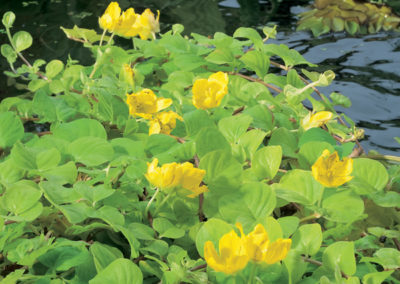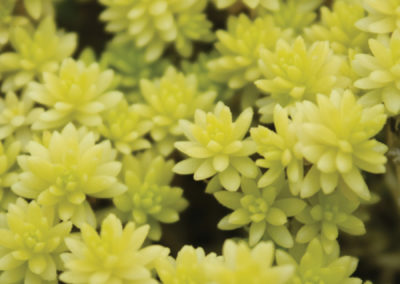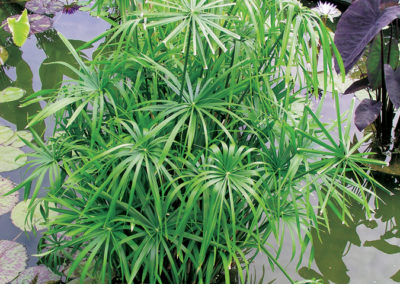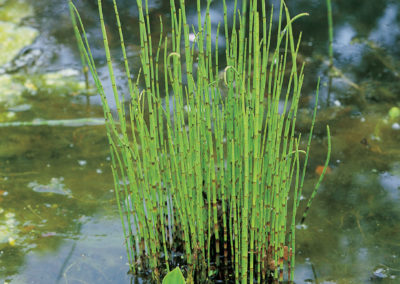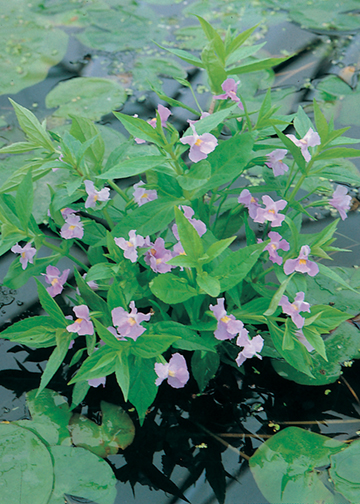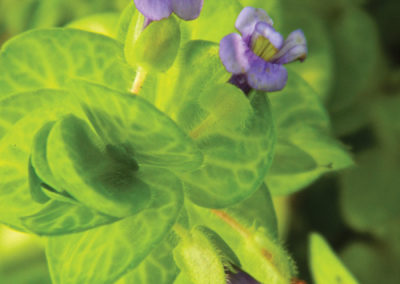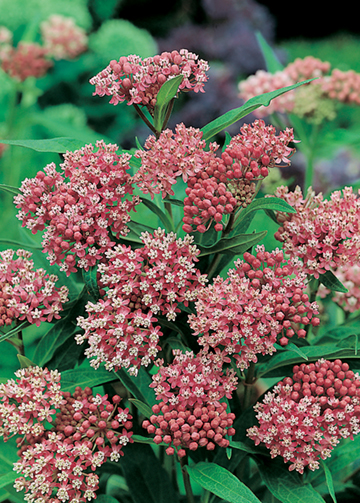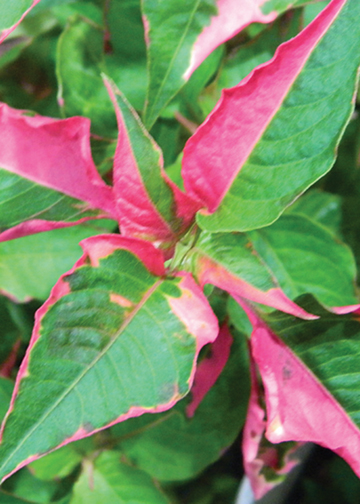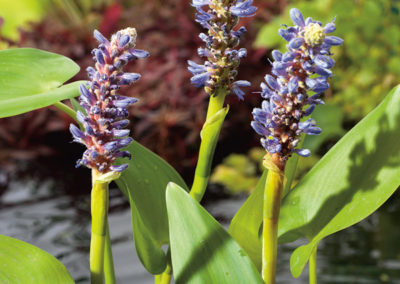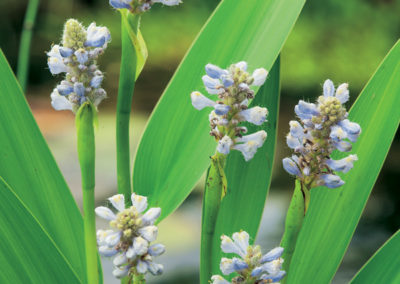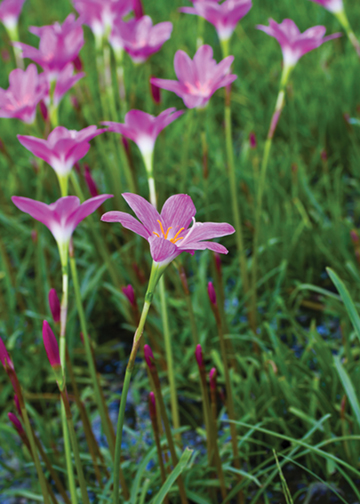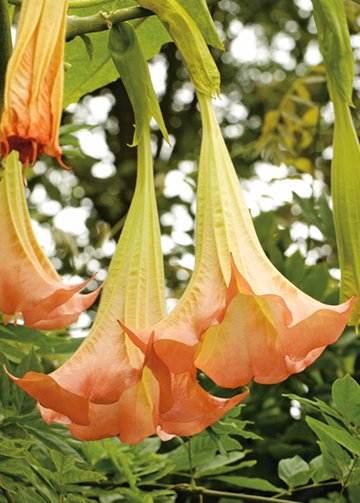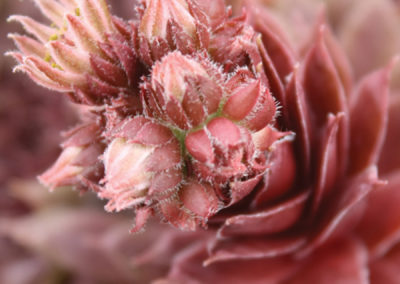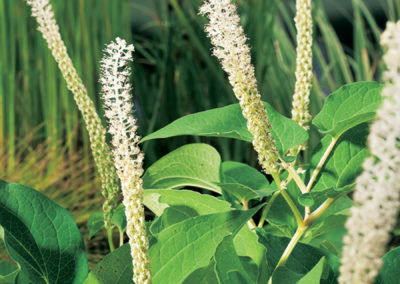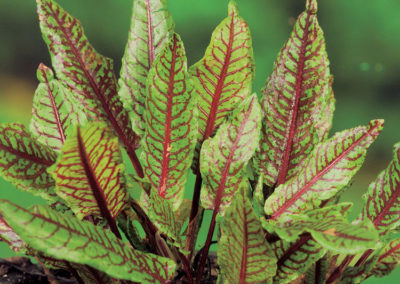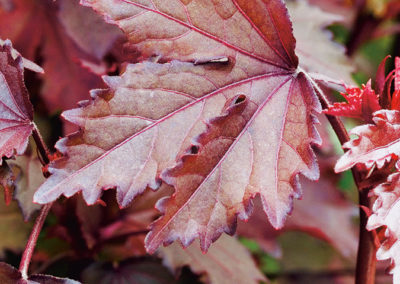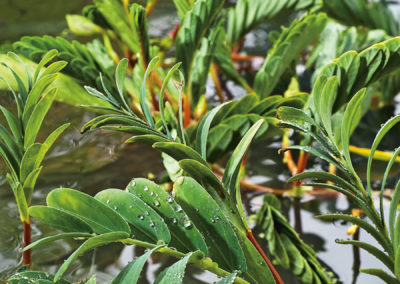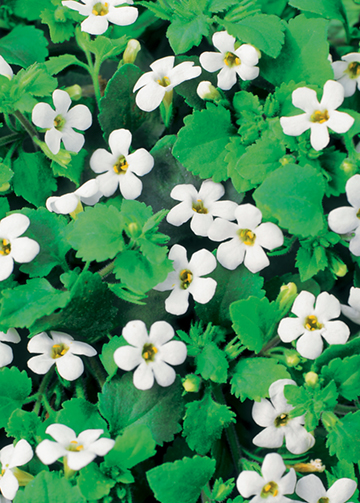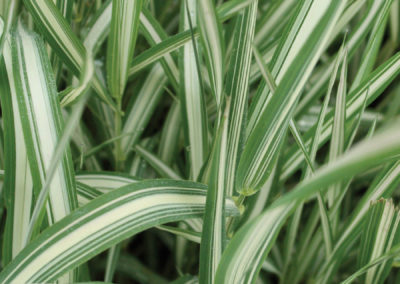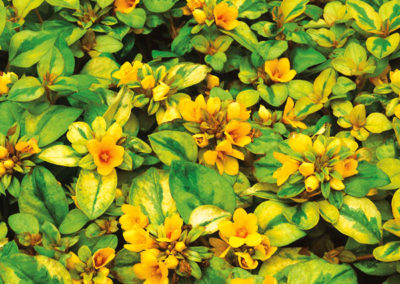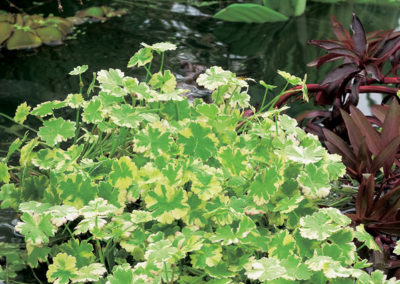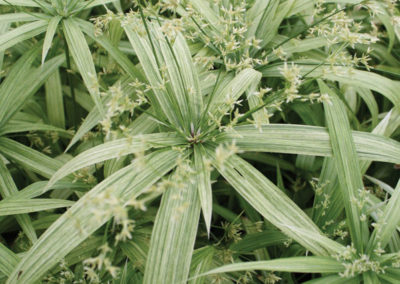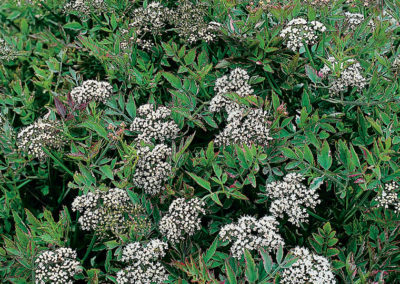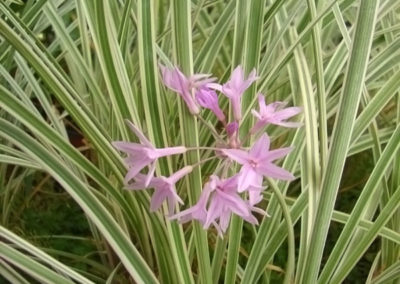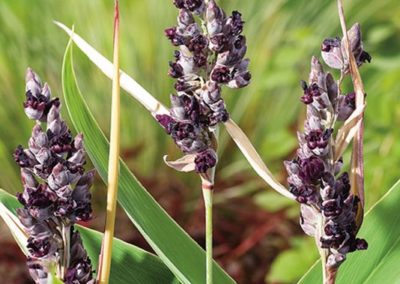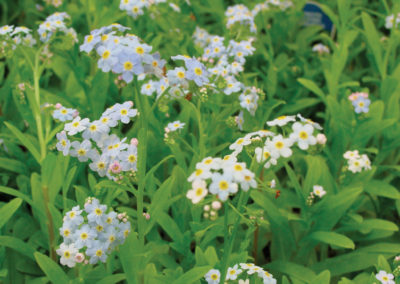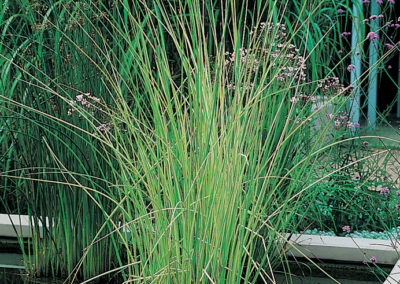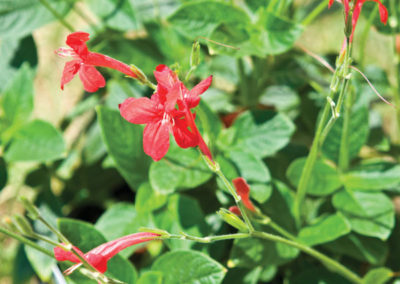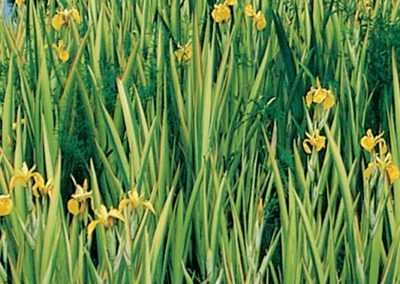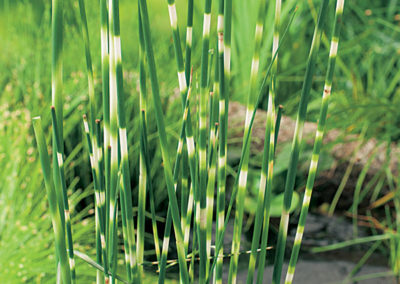Aquatic Plants

Enhancing Your Pond: The Importance of Aquatic Plants for Health and Beauty
Why Choose Aquatic Plants for Your Pond?
Are you looking to elevate the allure of your pond while ensuring its long-term health and vitality? Look no further than aquatic plants. These green wonders serve as more than just decorative elements; they are vital components of a thriving pond ecosystem.
Improved Water Quality: Aquatic plants act as natural filters, absorbing excess nutrients like nitrogen and phosphorus from the water. By doing so, they help prevent algae blooms and maintain water clarity, resulting in a healthier and more attractive pond.
Biodiversity Boost: The presence of aquatic plants provides habitat and shelter for various aquatic organisms, including fish, frogs, and beneficial insects. This fosters biodiversity and creates a balanced ecosystem where each species plays a vital role.
Aesthetic Appeal: From elegant water lilies to graceful rushes, aquatic plants add visual interest and natural beauty to your pond. Whether you prefer a serene, minimalist design or a lush, tropical paradise, there’s a wide variety of aquatic plants to suit your aesthetic preferences.
At Mock Pools & Ponds, we specialize in helping pond owners harness the power of aquatic plants to enhance their outdoor spaces. Our team of experts can assist you in selecting the perfect plants for your pond’s unique characteristics and design aesthetic. Experience the transformative impact of aquatic plants and watch your pond flourish into a breathtaking oasis of life and beauty.
Ready to transform your pond with aquatic plants? Our plants will be in the 1st week of May. Come in early for the best selection. Stop in Mock today for personalized recommendations and expert advice. Bring a picture and sample of your water and we will get your pond in excellent health. Let’s create a stunning aquatic environment.
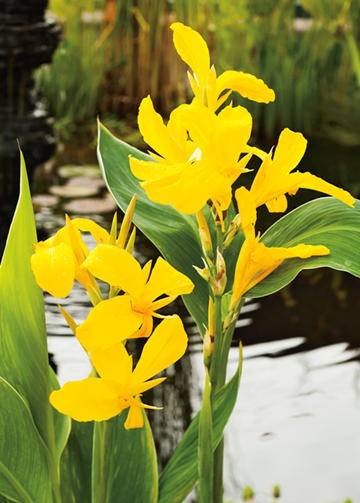
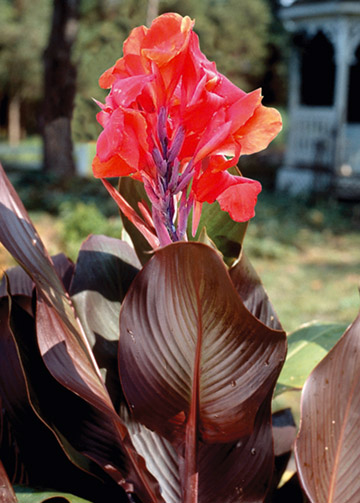
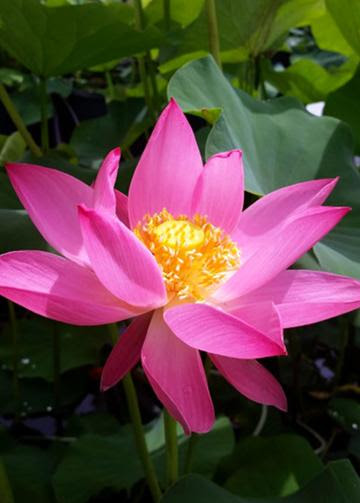
Welcome to the vibrant world of aquatic plants, where your pond transforms into a thriving ecosystem teeming with life and beauty!
Aquatic plants play a crucial role in maintaining the health and balance of your pond’s ecosystem. They act as natural filters, absorbing excess nutrients like nitrogen and phosphorus, which helps prevent algae blooms and keeps the water clear and clean. Additionally, their root systems provide habitat and shelter for fish, amphibians, and other aquatic creatures, promoting biodiversity and creating a harmonious environment.
But the importance of aquatic plants goes beyond mere functionality; they add a touch of natural elegance to your pond’s landscape, enhancing its visual appeal and creating a tranquil oasis in your backyard. Imagine the serene beauty of water lilies gracefully floating on the surface, or the delicate foliage of submerged plants swaying gently with the currents.
Now, let’s dive into some fascinating fun facts about aquatic plants:
Oxygen Providers: Did you know that aquatic plants are not only consumers of carbon dioxide but also producers of oxygen? Through photosynthesis, they release oxygen into the water, contributing to the overall oxygenation of your pond and supporting aquatic life.
Natural Pest Control: Certain aquatic plants, such as water hyacinths and duckweed, help control pests like mosquitoes by providing breeding grounds for predators such as dragonflies and fish that feed on mosquito larvae.
Seasonal Transformations: Many aquatic plants exhibit seasonal changes, from lush growth in the spring and summer to stunning blooms of flowers or vibrant foliage colors in the fall. These transformations add excitement and variety to your pond throughout the year.
Now, let me share a captivating story about the magic of aquatic plants:
Once upon a time, in a quaint backyard nestled amidst towering trees and fragrant flowers, there was a humble pond. At first glance, it seemed like any other body of water, but upon closer inspection, its true beauty revealed itself. The pond was adorned with an array of aquatic plants, each with its own unique charm and personality.
Among them was the water lily, with its enchanting blooms that opened at dawn and closed at dusk, perfuming the air with their sweet fragrance. Nearby, the lotus stood tall and regal, its majestic petals unfurling like a delicate work of art.
Beneath the surface, a bustling community thrived amidst the submerged foliage. Fish darted playfully among the reeds, while frogs croaked merrily from their lily pad perches. Dragonflies flitted about, their iridescent wings shimmering in the sunlight as they danced above the water’s surface.
As the seasons changed, so too did the pond’s inhabitants. In the spring, delicate shoots emerged from the water, heralding the arrival of new growth. Summer brought an explosion of color, with vibrant blooms dotting the landscape like splashes of paint on a canvas. And in the fall, the foliage transformed into a kaleidoscope of reds, oranges, and yellows, casting a warm glow upon the water’s surface.
And so, the pond remained a magical sanctuary, where the beauty of nature unfolded in every leaf and petal. Thanks to the vital role of aquatic plants, it thrived as a haven for life, reminding all who beheld it of the wonders of the natural world.
In conclusion, the importance of aquatic plants in your pond cannot be overstated. Not only do they contribute to the health and balance of the ecosystem, but they also bring joy and enchantment to your outdoor space. So why wait? Dive into the world of aquatic gardening today and watch as your pond transforms into a vibrant oasis of life and beauty!
Canna Lillies
Oxygenators
Oxygenators, also known as oxygenating plants, play a vital role in maintaining the health and balance of a koi pond ecosystem. These aquatic plants release oxygen through photosynthesis, enriching the water with dissolved oxygen that is essential for the well-being of fish, including koi. Here are several key purposes of oxygenators in your koi pond:
Oxygenation: The primary purpose of oxygenators is to increase the oxygen levels in the water. Fish, including koi, require oxygen to breathe, and oxygenators help ensure that an adequate supply of dissolved oxygen is available in the pond. This is particularly crucial during hot weather or periods of high biological activity when oxygen levels may become depleted.Aeration: Oxygenators contribute to the aeration of the water by releasing oxygen into the pond. This helps to maintain proper water circulation and prevent stagnation, ensuring that oxygen is distributed evenly throughout the pond and reaching all areas where fish may be present.
Biological Filtration: Some oxygenating plants, such as hornwort and anacharis, also serve as natural filters by absorbing excess nutrients from the water. This helps to control algae growth and improve water quality by reducing the levels of nitrogen and phosphorus, which can otherwise contribute to algae blooms and poor water clarity.Habitat and Shelter: Oxygenating plants provide habitat and shelter for aquatic organisms, including beneficial bacteria, insects, and small invertebrates, which form an essential part of the pond’s ecosystem. These organisms help to break down organic matter and contribute to the overall balance and health of the pond.
Natural Beauty: In addition to their functional benefits, oxygenating plants also enhance the aesthetic appeal of the pond. Their lush green foliage adds visual interest and natural beauty to the underwater landscape, creating a more vibrant and dynamic aquatic environment.
Overall, oxygenators are essential components of a healthy and balanced koi pond ecosystem, providing oxygenation, filtration, habitat, and beauty. Incorporating a variety of oxygenating plants into your pond can help create a thriving habitat for your koi and other aquatic life, ensuring their well-being and enjoyment for years to come.
Floating Plants
Floating aquatic plants are a diverse group of plants that live on the water’s surface without being rooted in the soil. They provide numerous benefits to ponds and water bodies, including shade, oxygenation, nutrient absorption, and habitat for aquatic organisms. Here are some common types of floating aquatic plants for ponds:
Water Hyacinth #1 seller see article at bottom of the page (Eichhornia crassipes): Water hyacinth is a fast-growing floating plant with attractive lavender-blue flowers. It helps control algae by shading the water surface and absorbing excess nutrients. However, in some regions, water hyacinth is considered an invasive species and should be used with caution.
Water Lettuce (Pistia stratiotes): Water lettuce forms rosettes of light green leaves and small white flowers. Like water hyacinth, it shades the water surface, reduces algae growth, and provides habitat for fish and other aquatic creatures.
Duckweed (Lemna minor): Duckweed consists of tiny, floating plants that form dense mats on the water surface. It is an excellent nutrient absorber and can quickly cover the surface of ponds, providing shade and reducing sunlight penetration to inhibit algae growth.
Water Fern (Salvinia spp.): Water ferns have floating leaves arranged in pairs, with small hairs that repel water. They create dense mats on the water surface, providing shade, reducing evaporation, and improving water quality by absorbing excess nutrients.
Watermeal (Wolffia spp.): Watermeal consists of the world’s smallest flowering plants, forming a green carpet-like layer on the water surface. Despite its tiny size, watermeal can rapidly cover ponds and provide shade while absorbing nutrients and helping to maintain water quality.
These floating aquatic plants not only enhance the aesthetics of ponds but also contribute to their ecological balance. However, it’s essential to manage their growth to prevent overcrowding and maintain a healthy pond ecosystem. Regular maintenance, such as thinning out excess growth and removing debris, can help ensure the continued health and beauty of your pond.
Bog Plants
Bog plants, are a type of aquatic plant species that thrive in boggy or marshy environments. Bogs are wetland areas characterized by acidic, nutrient-poor soil and waterlogged conditions. Bog plants have adapted to these unique conditions and play a crucial role in the ecosystem.
Bog plants are important for maintaining the health and biodiversity of bog ecosystems. They help stabilize the soil, prevent erosion, and provide habitat and food for a variety of wildlife species. Additionally, bog plants play a role in nutrient cycling and water filtration, making them essential components of healthy wetland ecosystems.
THE POWER OF PLANTS. READ BELOW.
WATCH VIDEO HERE
Walt Disney World: Methane From Water Hyacinth
Among the futuristic technological achievements at Walt Disney World (Orlando, Florida) one is not seen by the general public: an experimental system which integrates a water hyacinth wastewater treatment process with a methane production facility. In the system, some wastewater from the attraction’s theme parks is cleansed by the action of water hyacinths, which are subsequently harvested and fed to a sophisticated anaerobic digestor for the production of usable methane. The project is sponsored by the Gas Research Institute (GRI) and according to them, “this research is expected to benefit the gas consumer and the public at large by providing local sources of pipeline-quality gas.” Results here may lead to the construction of commercial full-scale water hyacinth utilization facilities in the late 1980s.
The first part of the system is the hyacinth secondary and tertiary wastewater treatment process. After some solids have settled out as sludge in the “primary clarifier”, the water is diverted to concrete channels where the plants are cultured. Here, the plants remove unwanted nutrients and other pollutants, while complex organic wastes are broken down to simpler compounds by the bacteria which live on the water hyacinths. These simpler waste compounds are then utilized by the growing hyacinths. Under these conditions, the hyacinths grow luxuriantly.
After several days flow through the hyacinth channels, the water is clearer, waste compounds have been reduced, and the discharge stream meets water treatment standards.
To increase hyacinth growth rate and to remove polluting compounds from wastewater more effectively requires scheduled harvesting of the hyacinths, and scientists are studying which harvesting schedules best fit the seasonal growth patterns of the hyacinths.
The next part of the Disney World hyacinth system is the biogasification process in which harvested water hyacinths are anaerobically convrerted into pipeline quality methane gas. Encouraged by results of bench-scale tests, GRI built this scaled-up (1200-gallon) experimental unit which began operation in January 1984. Expperiments with this test unit are expected to continue until 1987, when another scale-up will be built. This next scale-up may verify the economic suitability of the concept before design and construction of a full-scale commercial facility is attempted.
The pictured test unit is “designed to include the major physical, chemical, and biological operations and processes essential to the functioning of a full-scale biogasification plant.” The unit has complete processing capabilities including water hyacinth and sludge preparation, feed blending, anaerobic digestion, gas treatment, and effluent handling. The effects of loading rates, particle size, hyacinth/sludge mixing, and pre- and post-treatment are being determined.
Water hyacinths are processed through a chopper and grinder to reduce particle size. Sludge from the primary clarifier is mixed with the water hyacinths and added to the digester as a feed blend. Bacteria in the reactor digest the feed, producing methane and carbon dioxide. The undigested residues are collected and processed for potential use as animal feed or fertilizer. The gas is then “cleaned up” (carbon dioxide, hydrogen sulfide and moisture are removed) for pipeline distribution.
Disney’s Water Hyacinth Project was and idea to take perhaps one of the region’s most unwanted plants and use it as a force for good for the environment. In a way, it captured the spirit of EPCOT Center perfectly, before there even was an EPCOT Center.
Aquatic plants play a pivotal role in maintaining the health and balance of ponds and water bodies, making them essential components of any aquatic ecosystem. They serve as natural filters, absorbing excess nutrients like nitrogen and phosphorus from the water, thus preventing algae blooms and maintaining water clarity. Additionally, aquatic plants provide habitat and shelter for various aquatic species, promoting biodiversity and creating a thriving ecosystem.
Disney Land recognizes the significance of aquatic plants and utilizes floating plants like water hyacinths to clear and maintain their water supply. These plants act as natural filtration systems, efficiently absorbing pollutants and keeping the water clean and clear. By incorporating floating plants into their water management strategy, Disney Land ensures the preservation of their iconic landscapes while demonstrating a commitment to environmental stewardship and sustainability.
At Mock Pools and Ponds, we emphasize the importance of aquatic plants in creating healthy and balanced aquatic environments. Whether you’re designing a backyard pond or a commercial water feature, incorporating aquatic plants is key to maintaining water quality and promoting a vibrant ecosystem. Join us in embracing the beauty and benefits of aquatic plants for the well-being of your aquatic habitat.
Contact Us
Need some ideas? Send us your photos!
Mock Property Services
330-628-9100 #3
Mock Pools & Ponds | Mock & Co. Boutique
41 South Cleveland Ave
Mogadore, Ohio 44260
330-628-9100 #1
Follow Us on Social Media

